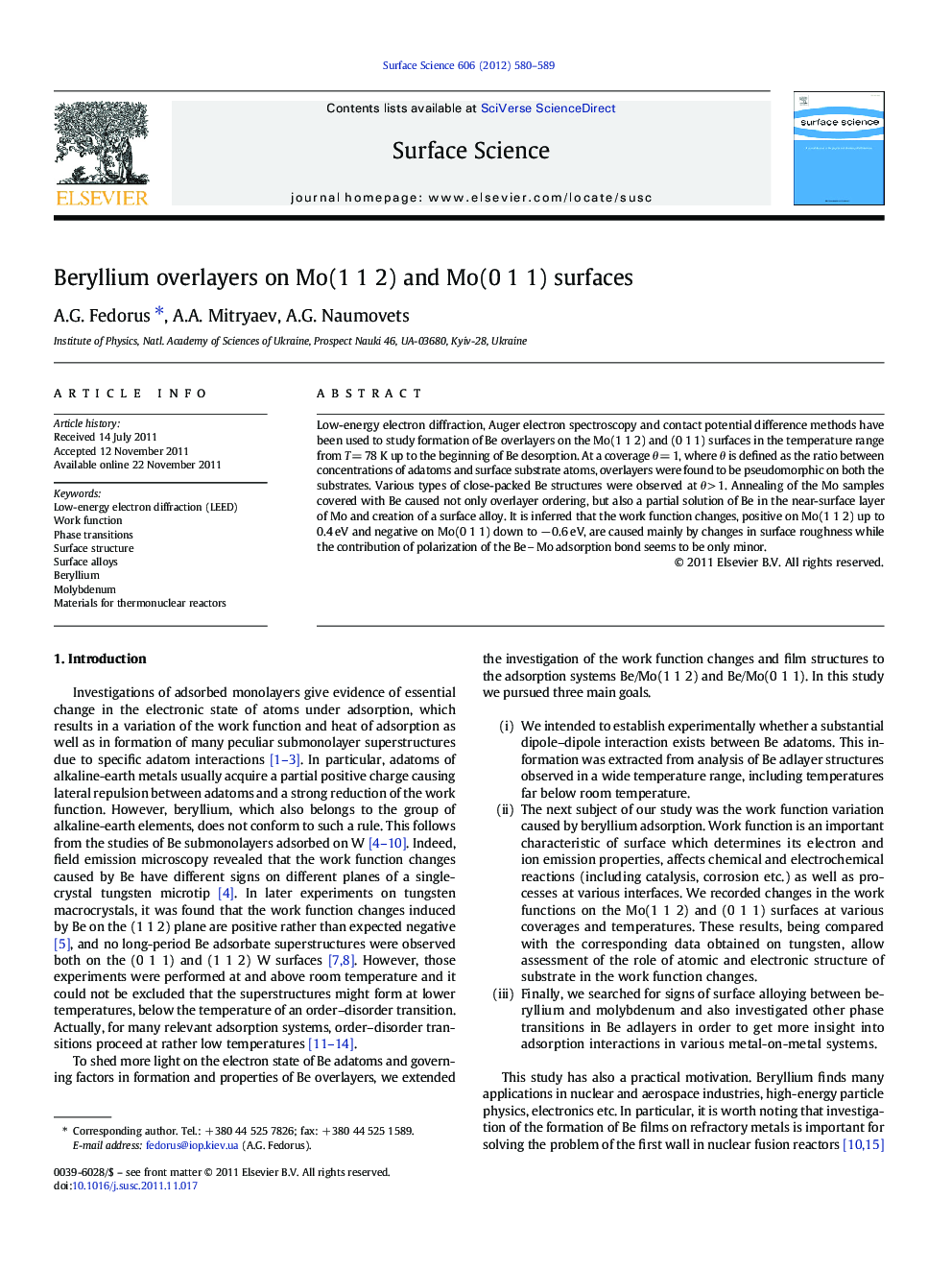| Article ID | Journal | Published Year | Pages | File Type |
|---|---|---|---|---|
| 5423093 | Surface Science | 2012 | 10 Pages |
Abstract
Low-energy electron diffraction, Auger electron spectroscopy and contact potential difference methods have been used to study formation of Be overlayers on the Mo(1 1 2) and (0 1 1) surfaces in the temperature range from T = 78 K up to the beginning of Be desorption. At a coverage θ = 1, where θ is defined as the ratio between concentrations of adatoms and surface substrate atoms, overlayers were found to be pseudomorphic on both the substrates. Various types of close-packed Be structures were observed at θ > 1. Annealing of the Mo samples covered with Be caused not only overlayer ordering, but also a partial solution of Be in the near-surface layer of Mo and creation of a surface alloy. It is inferred that the work function changes, positive on Mo(1 1 2) up to 0.4 eV and negative on Mo(0 1 1) down to â 0.6 eV, are caused mainly by changes in surface roughness while the contribution of polarization of the BeMo adsorption bond seems to be only minor.
Keywords
Related Topics
Physical Sciences and Engineering
Chemistry
Physical and Theoretical Chemistry
Authors
A.G. Fedorus, A.A. Mitryaev, A.G. Naumovets,
